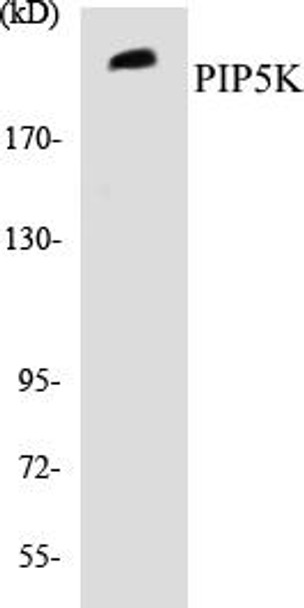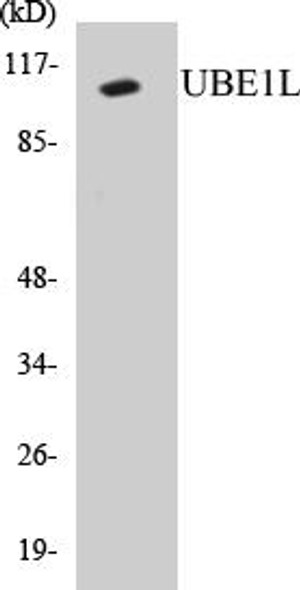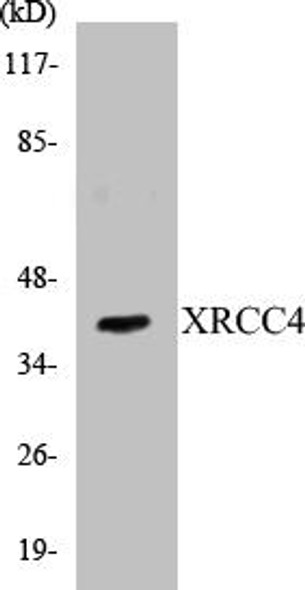Description
PIP5K Colorimetric Cell-Based ELISA Kit
The Pip5k Colorimetric Cell-Based ELISA Kit from Assay Genie is a cutting-edge tool for quantifying the levels of phosphatidylinositol phosphate 5-kinase (Pip5k) in cell lysates. This kit provides precise and accurate results, offering high sensitivity and specificity for reliable data analysis.Pip5k is a key enzyme involved in the regulation of cellular processes such as cell migration, cytoskeletal organization, and signal transduction. Dysregulation of Pip5k has been implicated in various diseases, including cancer, inflammation, and neurodegenerative disorders, highlighting its importance as a potential therapeutic target.
By using the Pip5k Colorimetric Cell-Based ELISA Kit, researchers can gain valuable insights into the role of Pip5k in cellular signaling pathways and disease pathogenesis. This kit is ideal for a wide range of research applications and enables scientists to uncover new avenues for drug development and personalized medicine.
| Product Name: | PIP5K Colorimetric Cell-Based ELISA |
| Product Code: | CBCAB00815 |
| ELISA Type: | Cell-Based |
| Target: | PIP5K |
| Reactivity: | Human, Mouse |
| Dynamic Range: | > 5000 Cells |
| Detection Method: | Colorimetric 450 nmStorage/Stability:4°C/6 Months |
| Format: | 96-Well Microplate |
The PIP5K Colorimetric Cell-Based ELISA Kit is a convenient, lysate-free, high throughput and sensitive assay kit that can detect PIP5K protein expression profile in cells. The kit can be used for measuring the relative amounts of PIP5K in cultured cells as well as screening for the effects that various treatments, inhibitors (ie siRNA or chemicals), or activators have on PIP5K.
Qualitative determination of PIP5K concentration is achieved by an indirect ELISA format. In essence, PIP5K is captured by PIP5K-specific primary antibodies while the HRP-conjugated secondary antibodies bind the Fc region of the primary antibody. Through this binding, the HRP enzyme conjugated to the secondary antibody can catalyze a colorimetric reaction upon substrate addition. Due to the qualitative nature of the Cell-Based ELISA, multiple normalization methods are needed:
| 1. | A monoclonal antibody specific for human GAPDH is included to serve as an internal positive control in normalizing the target absorbance values. |
| 2. | Following the colorimetric measurement of HRP activity via substrate addition, the Crystal Violet whole-cell staining method may be used to determine cell density. After staining, the results can be analysed by normalizing the absorbance values to cell amounts, by which the plating difference can be adjusted. |
| Database Information: | Gene ID: 200576, UniProt ID: Q9Y2I7, OMIM: 609414, Unigene: Hs.724606 |
| Gene Symbol: | PIKFYVE |
| Sub Type: | None |
| UniProt Protein Function: | PIKFYVE: The PI(3,5)P2 regulatory complex regulates both the synthesis and turnover of phosphatidylinositol 3,5-bisphosphate (PtdIns(3,5)P2). Catalyzes the phosphorylation of phosphatidylinositol 3-phosphate on the fifth hydroxyl of the myo- inositol ring, to form phosphatidylinositol 3,5-bisphosphate. Required for endocytic-vacuolar pathway and nuclear migration. Plays a role in the biogenesis of endosome carrier vesicles (ECV)/ multivesicular bodies (MVB) transport intermediates from early endosomes. Defects in PIKFYVE are the cause of corneal fleck dystrophy (CFD). CFD is an autosomal dominant disorder of the cornea characterized by numerous small white flecks scattered in all levels of the stroma. Although CFD may occasionally cause mild photophobia, patients are typically asymptomatic and have normal vision. 4 isoforms of the human protein are produced by alternative splicing. |
| UniProt Protein Details: | Protein type:EC 2.7.1.150; Motility/polarity/chemotaxis; Kinase, lipid; Carbohydrate Metabolism - inositol phosphate Chromosomal Location of Human Ortholog: 2q34 Cellular Component: early endosome membrane; endosome membrane; Golgi membrane; late endosome membrane; lipid raft Molecular Function:1-phosphatidylinositol-4-phosphate 5-kinase activity; phosphatidylinositol-3,5-bisphosphate 5-phosphatase activity; protein binding Biological Process: phosphatidylinositol biosynthetic process; receptor-mediated endocytosis; retrograde transport, endosome to Golgi Disease: Corneal Dystrophy, Fleck |
| NCBI Summary: | Phosphorylated derivatives of phosphatidylinositol (PtdIns) regulate cytoskeletal functions, membrane trafficking, and receptor signaling by recruiting protein complexes to cell- and endosomal-membranes. Humans have multiple PtdIns proteins that differ by the degree and position of phosphorylation of the inositol ring. This gene encodes an enzyme (PIKfyve; also known as phosphatidylinositol-3-phosphate 5-kinase type III or PIPKIII) that phosphorylates the D-5 position in PtdIns and phosphatidylinositol-3-phosphate (PtdIns3P) to make PtdIns5P and PtdIns(3,5)biphosphate. The D-5 position also can be phosphorylated by type I PtdIns4P-5-kinases (PIP5Ks) that are encoded by distinct genes and preferentially phosphorylate D-4 phosphorylated PtdIns. In contrast, PIKfyve preferentially phosphorylates D-3 phosphorylated PtdIns. In addition to being a lipid kinase, PIKfyve also has protein kinase activity. PIKfyve regulates endomembrane homeostasis and plays a role in the biogenesis of endosome carrier vesicles from early endosomes. Mutations in this gene cause corneal fleck dystrophy (CFD); an autosomal dominant disorder characterized by numerous small white flecks present in all layers of the corneal stroma. Histologically, these flecks appear to be keratocytes distended with lipid and mucopolysaccharide filled intracytoplasmic vacuoles. Alternative splicing results in multiple transcript variants encoding distinct isoforms.[provided by RefSeq, May 2010] |
| UniProt Code: | Q9Y2I7 |
| NCBI GenInfo Identifier: | 300669693 |
| NCBI Gene ID: | 200576 |
| NCBI Accession: | Q9Y2I7.3 |
| UniProt Secondary Accession: | Q9Y2I7,Q08AR7, Q08AR8, Q53ST3, Q53T36, Q8N5H0, Q8NB67 |
| UniProt Related Accession: | Q9Y2I7 |
| Molecular Weight: | 61,595 Da |
| NCBI Full Name: | 1-phosphatidylinositol 3-phosphate 5-kinase |
| NCBI Synonym Full Names: | phosphoinositide kinase, FYVE-type zinc finger containing |
| NCBI Official Symbol: | PIKFYVE |
| NCBI Official Synonym Symbols: | CFD; FAB1; HEL37; PIP5K; PIP5K3; ZFYVE29 |
| NCBI Protein Information: | 1-phosphatidylinositol 3-phosphate 5-kinase |
| UniProt Protein Name: | 1-phosphatidylinositol 3-phosphate 5-kinase |
| UniProt Synonym Protein Names: | FYVE finger-containing phosphoinositide kinase; PIKfyve; Phosphatidylinositol 3-phosphate 5-kinase type III; PIPkin-III; Type III PIP kinase |
| UniProt Gene Name: | PIKFYVE |
| UniProt Entry Name: | FYV1_HUMAN |
| Component | Quantity |
| 96-Well Cell Culture Clear-Bottom Microplate | 2 plates |
| 10X TBS | 24 mL |
| Quenching Buffer | 24 mL |
| Blocking Buffer | 50 mL |
| 15X Wash Buffer | 50 mL |
| Primary Antibody Diluent | 12 mL |
| 100x Anti-Phospho Target Antibody | 60 µL |
| 100x Anti-Target Antibody | 60 µL |
| Anti-GAPDH Antibody | 60 µL |
| HRP-Conjugated Anti-Rabbit IgG Antibody | 12 mL |
| HRP-Conjugated Anti-Mouse IgG Antibody | 12 mL |
| SDS Solution | 12 mL |
| Stop Solution | 24 mL |
| Ready-to-Use Substrate | 12 mL |
| Crystal Violet Solution | 12 mL |
| Adhesive Plate Seals | 2 seals |
The following materials and/or equipment are NOT provided in this kit but are necessary to successfully conduct the experiment:
- Microplate reader able to measure absorbance at 450 nm and/or 595 nm for Crystal Violet Cell Staining (Optional)
- Micropipettes with capability of measuring volumes ranging from 1 µL to 1 ml
- 37% formaldehyde (Sigma Cat# F-8775) or formaldehyde from other sources
- Squirt bottle, manifold dispenser, multichannel pipette reservoir or automated microplate washer
- Graph paper or computer software capable of generating or displaying logarithmic functions
- Absorbent papers or vacuum aspirator
- Test tubes or microfuge tubes capable of storing ≥1 ml
- Poly-L-Lysine (Sigma Cat# P4832 for suspension cells)
- Orbital shaker (optional)
- Deionized or sterile water
*Note: Protocols are specific to each batch/lot. For the correct instructions please follow the protocol included in your kit.
| Step | Procedure |
| 1. | Seed 200 µL of 20,000 adherent cells in culture medium in each well of a 96-well plate. The plates included in the kit are sterile and treated for cell culture. For suspension cells and loosely attached cells, coat the plates with 100 µL of 10 µg/ml Poly-L-Lysine (not included) to each well of a 96-well plate for 30 minutes at 37°C prior to adding cells. |
| 2. | Incubate the cells for overnight at 37°C, 5% CO2. |
| 3. | Treat the cells as desired. |
| 4. | Remove the cell culture medium and rinse with 200 µL of 1x TBS, twice. |
| 5. | Fix the cells by incubating with 100 µL of Fixing Solution for 20 minutes at room temperature. The 4% formaldehyde is used for adherent cells and 8% formaldehyde is used for suspension cells and loosely attached cells. |
| 6. | Remove the Fixing Solution and wash the plate 3 times with 200 µL 1x Wash Buffer for five minutes each time with gentle shaking on the orbital shaker. The plate can be stored at 4°C for a week. |
| 7. | Add 100 µL of Quenching Buffer and incubate for 20 minutes at room temperature. |
| 8. | Wash the plate 3 times with 1x Wash Buffer for 5 minutes each time. |
| 9. | Add 200 µL of Blocking Buffer and incubate for 1 hour at room temperature. |
| 10. | Wash 3 times with 200 µL of 1x Wash Buffer for 5 minutes each time. |
| 11. | Add 50 µL of 1x primary antibodies (Anti-PIP5K Antibody and/or Anti-GAPDH Antibody) to the corresponding wells, cover with Parafilm and incubate for 16 hours (overnight) at 4°C. If the target expression is known to be high, incubate for 2 hours at room temperature. |
| 12. | Wash 3 times with 200 µL of 1x Wash Buffer for 5 minutes each time. |
| 13. | Add 50 µL of 1x secondary antibodies (HRP-Conjugated AntiRabbit IgG Antibody or HRP-Conjugated Anti-Mouse IgG Antibody) to corresponding wells and incubate for 1.5 hours at room temperature. |
| 14. | Wash 3 times with 200 µL of 1x Wash Buffer for 5 minutes each time. |
| 15. | Add 50 µL of Ready-to-Use Substrate to each well and incubate for 30 minutes at room temperature in the dark. |
| 16. | Add 50 µL of Stop Solution to each well and read OD at 450 nm immediately using the microplate reader. |
(Additional Crystal Violet staining may be performed if desired – details of this may be found in the kit technical manual.)






